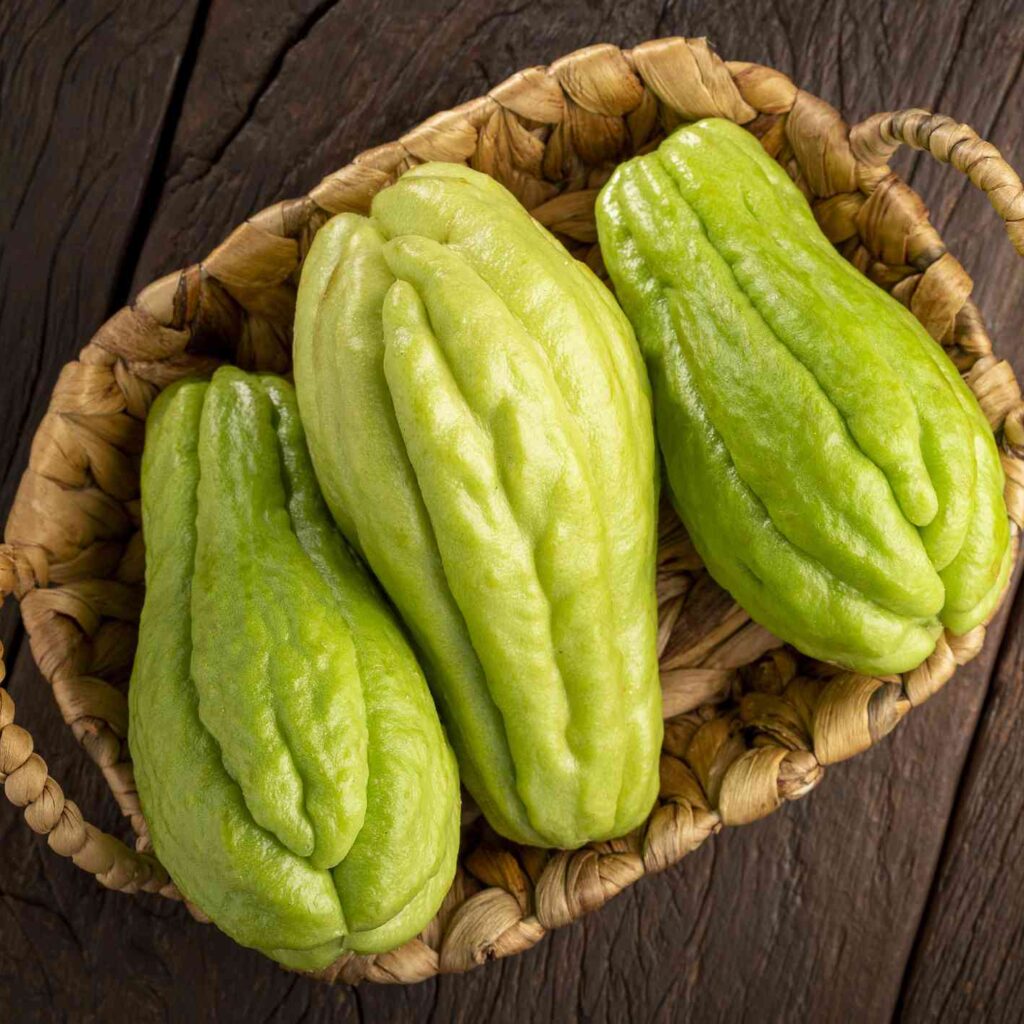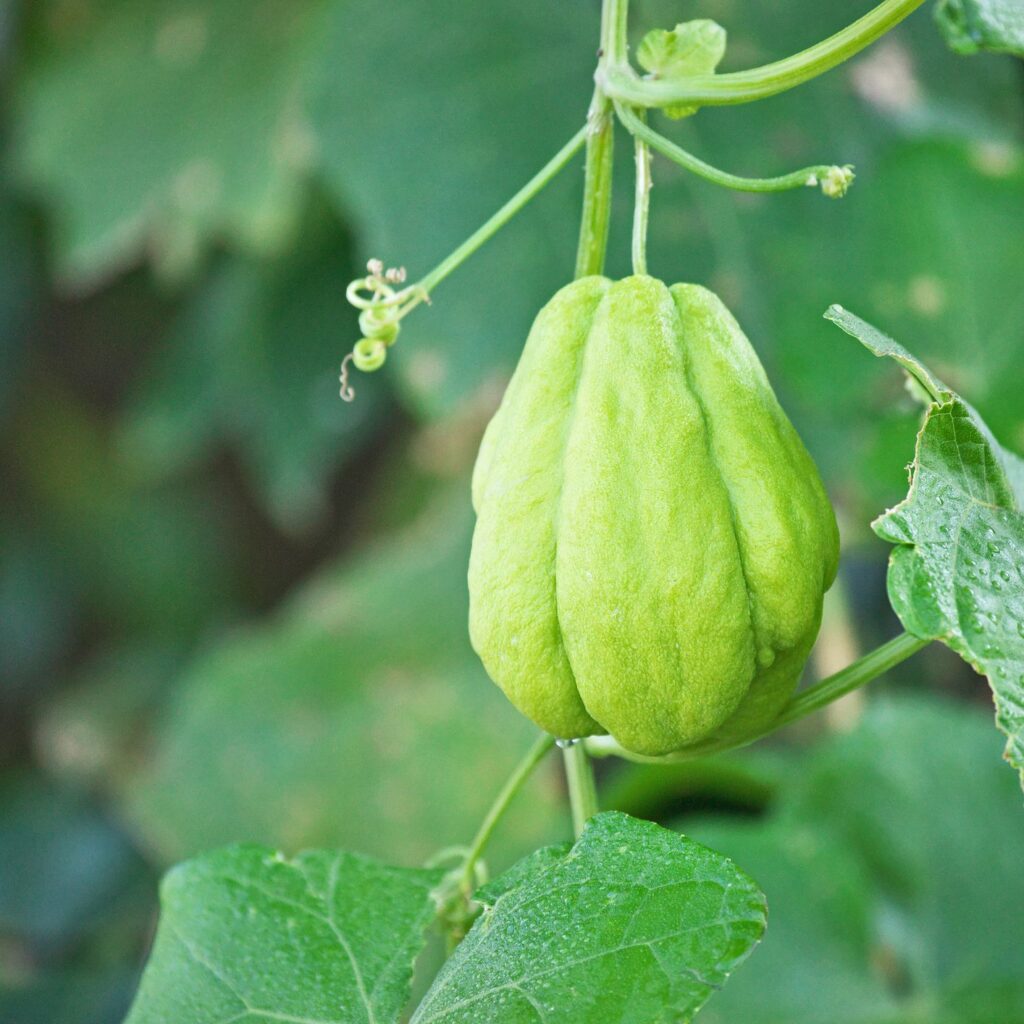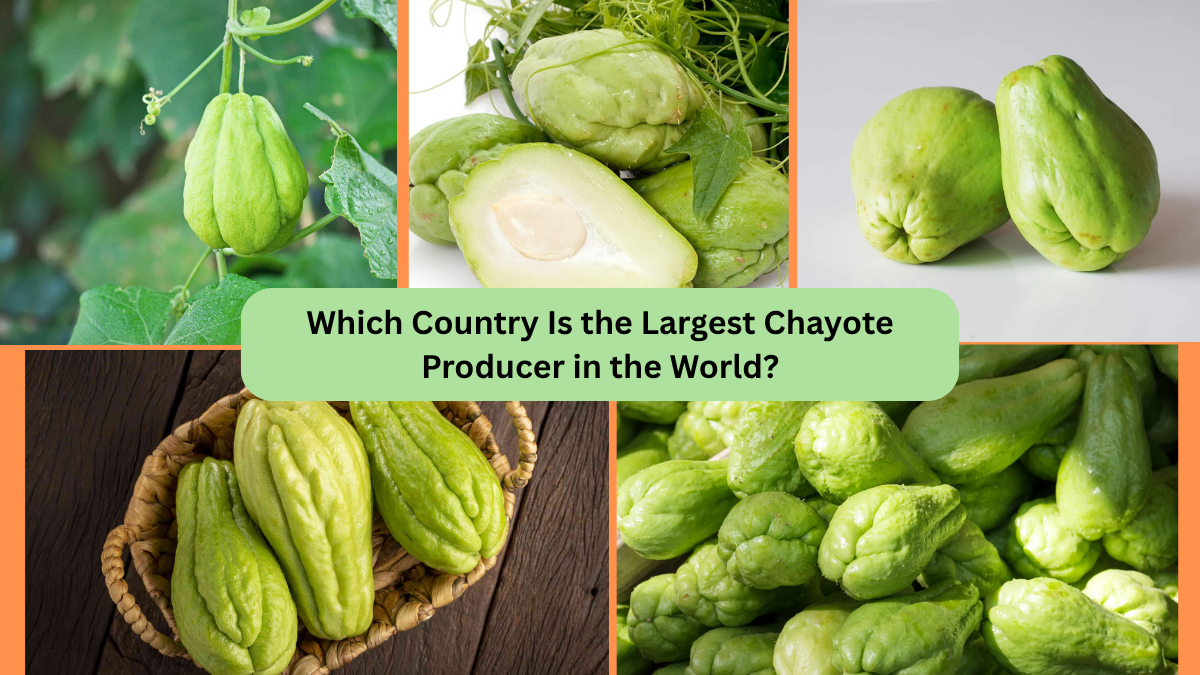Though often used more like a vegetable than a fruit, chayote (Sechium edule), also known as mirliton, cho-cho, or chokō, is a versatile staple in kitchens across the globe. With crisp, mild flesh, it lends itself to everything from salads and soups to stir-fries and preserves.
But speaking of scale—which country produces the most chayote? The answer is clear: Mexico.
What Is Chayote?

- A perennial vine in the gourd family, chayote was domesticated centuries ago by Mesoamerican civilizations—Aztecs, Mayans, and others—from southern Mexico into Central America industrygrowthinsights.com+6researchgate.net+6researchgate.net+6reddit.com+6world-crops.com+6en.wikipedia.org+6.
- It bears pear-shaped light-green fruits (10–20 cm long), whose stems, shoots, and leaves are all edible world-crops.com.
- Popularly categorized as a vegetable, chayote is, botanically, a fruit .
- Globally cultivated in tropical to subtropical regions—from Asia to Africa to the Americas reddit.com+1en.wikipedia.org+1.
Mexico: Reigning Over Chayote Production
Mexico holds the title of the world’s largest chayote producer, and data shows why:
- According to FAO and Mexico’s Ministry of Agriculture, Mexico leads global production, with around 1.13 million tonnes of chayote harvested in recent years, making it #1 globally alongside onions in 2022 imrmarketreports.com+12marketresearch.com+12dataintelo.com+12.
- This dwarfs other major producers like Brazil (170,000 t in 1978), Costa Rica (~16,000 t in 1991 from just 220 ha), and USA (California, Florida minor production) researchgate.net+1researchgate.net+1.
- Chayote thrives across multiple states: Mexico City, Estado de México, Veracruz, Puebla, Oaxaca, Chiapas, and Morelos—benefiting from a mix of altitude and tropical climate researchgate.net.
With vast acreage, ideal climate, and a cultural affinity for the crop, Mexico’s lead is clear and unshakable.
How Mexico Compares Globally

| Country | Estimated Annual Production |
|---|---|
| Mexico | ~1,130,660 t (2022) |
| Brazil | ~170,000 t (1978) |
| Costa Rica | ~16,300 t (1991) |
| USA | Few thousand tonnes (limited) |
| Other regions (Asia, Africa, Europe) | Scattered small-scale production |
- Brazil’s 1978 figures still pale next to Mexico’s modern output researchgate.net+1dataintelo.com+1en.wikipedia.org+6researchgate.net+6en.wikipedia.org+6.
- Costa Rica is a key exporter to the US and Europe but remains far behind in volume .
- The US grows chayote on a small scale—farmers in Louisiana, California, and Florida—but production remains small reddit.com+3researchgate.net+3dataintelo.com+3.
Why Mexico Leads

1. Center of Origin & Diversity
Mexico, along with Guatemala, boasts the greatest genetic diversity of chayote, essential for breeding and large-scale cultivation researchgate.net.
2. Climate & Geography
From sea-level tropics to cooler highlands, Mexico offers premier growing conditions and a long harvest season .
3. Cultural Integration
Chayote is a culinary staple—used in stews (caldos), salads, baked dishes, salsas, and even pickles—ensuring consistent local demand.
4. Economies of Scale
With sprawling orchards and commercial fields, Mexico’s infrastructure—seed systems, packaging, market logistics—supports high yield and distribution.
Culinary & Nutritional Highlights
- Nutritionally rich: Packed with vitamin C, fiber, and low in calories—making it a healthy alternative to starchy veggies reddit.com+4dataintelo.com+4en.wikipedia.org+4.
- Culinary flexibility: Works raw in salads, grilled, stuffed, sautéed, or baked. In Thailand and the Philippines, leaves and shoots are also culinary staples world-crops.com+1en.wikipedia.org+1.
- Cultural versions: Known as mirliton in Louisiana (used in holiday casseroles) and choko in Australia and New Zealand en.wikipedia.org+2reddit.com+2reddit.com+2.
Global Markets & Trends

Costa Rican Exports
Costa Rica leads in export markets, shipping to the US, Canada, and parts of Europe researchgate.net+1templeresearch-insights.com+1. Despite lower volume, its quality and marketing strategy make it a key player.
Frozen & Value-Added Products
The chilled/frozen chayote market is growing especially in North America, Europe, and Asia, catering to convenience-oriented consumers dataintelo.com+1marketresearch.com+1.
Health & Plant-Based Diet Trends
As plant-based diets gain popularity, chayote’s low-calorie, nutrient-rich profile positions it as a smart choice for health-conscious markets .
Challenges & Opportunities

Challenges
- Perishability: Fresh chayote has limited shelf life and needs careful handling during harvest and transport.
- Market unfamiliarity: In some Western markets, consumers may not recognize or know how to cook it.
Opportunities
- Frozen chayote: Offers convenience and less waste, key for global expansion .
- Global cuisine integration: International recipes and chef endorsements could boost its popularity.
- Organic cultivation: Eco-friendly methods can tap niche organic produce markets.
The Road Ahead
- Canada, US & EU exposure: More frozen/fresh chayote in grocery chains and culinary schools.
- Breeding & innovation: New cultivars for larger yields, disease resistance, and better transport durability.
- Agri-exports: Mexico likely to expand exports alongside Costa Rica to balance local and global demand.
Final Answer
So, which country is the largest chayote producer in the world? It’s Mexico—by a substantial margin. Its historic origin, unmatched production volume (~1.13 million t), cultural integration, and agricultural dominance make it the undisputed global leader.
Other countries like Brazil and Costa Rica contribute significantly—especially in trade—but none compare to Mexico’s scale and legacy.




